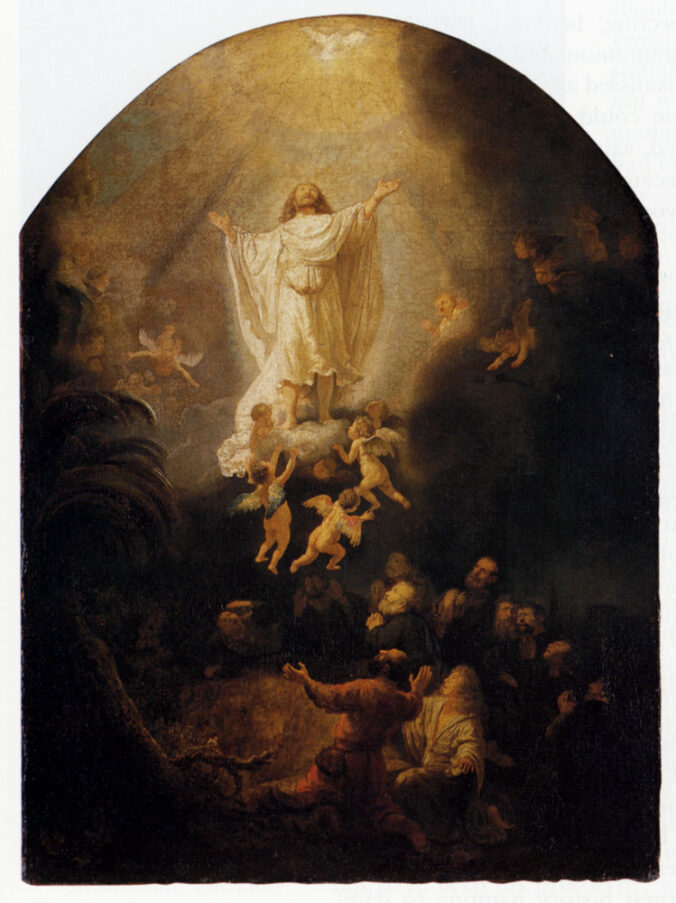Christians believe some strange things. We believe that the founder of our faith was completely human man and also fully God, that he died and came back to life, and then, forty days later, he left our atmosphere in a cloud. I’ve even seen Sunday school drawings of Jesus taking off like a rocket, complete with fire coming out of his sandals.
If you just Google paintings of the Ascension, you’ll see a lot of different scenes. Sometimes Jesus is soaring like an eagle. Sometimes it looks like he’s taking an elevator. A lot of times, all you see is his feet at the top of the painting or icon. It’s a doctrine that’s hard to wrap my head around sometimes.
Still, this is what all Christians, everywhere, have always believed. It’s in the Apostles’ Creed. It’s in the Bible. And I’m thinking about it because last Thursday was Ascension Day. For those of us who are mindful of the church calendar (and you don’t have to be (Romans 14:5)), this is the part of the year where we remember and believe that Christ ascended into heaven.
6 So when they had come together, they asked him, “Lord, will you at this time restore the kingdom to Israel?” 7 He said to them, “It is not for you to know times or seasons that the Father has fixed by his own authority. 8 But you will receive power when the Holy Spirit has come upon you, and you will be my witnesses in Jerusalem and in all Judea and Samaria, and to the end of the earth.” 9 And when he had said these things, as they were looking on, he was lifted up, and a cloud took him out of their sight. 10 And while they were gazing into heaven as he went, behold, two men stood by them in white robes, 11 and said, “Men of Galilee, why do you stand looking into heaven? This Jesus, who was taken up from you into heaven, will come in the same way as you saw him go into heaven.”
Acts 1:6-11
For my money, Ascension Day should be ranked up there with Christmas and Easter. When Thomas Cranmer was putting the Book of Common Prayer together, the collect (liturgical prayer) for that day goes like this:
Grant we beseech thee, almighty god, that lie as we do believe thy only begotten son our lord to have ascended into the heavens; so we may also in heart and mind thither ascend, and with him continually dwell.
This prayer, drawing on texts like Colossians 3:1-2, link Jesus’ absence with the Church’s presence. Even though Jesus has physically passed into a realm that we cannot comprehend, our inner lives can follow and glow with the warmth of that place. Thomas Aquinas reminds us that Jesus’ ascension into heaven benefits us in at least three ways:
- In order to increase our faith, which is in things unseen. We cannot see Jesus and yet we believe in him. By definition, the ascension necessitates an increasing faith.
- To uplift our hope (“And if I go and prepare a place for you, I will come again and will take you to myself, that where I am you may be also” (Jn.14:3)).
- To orient our love towards heavenly things (“If then you have been raised with Christ, seek the things that are above, where Christ is, seated at the right hand of God. Set your minds on things that are above, not on things that are on earth.” (Col.3:1-2))
Faith, hope, and love. These are the three theological virtues. These are the marks of believers. When we put our thoughts and our affections where Jesus is, we start to live as Jesus would.
